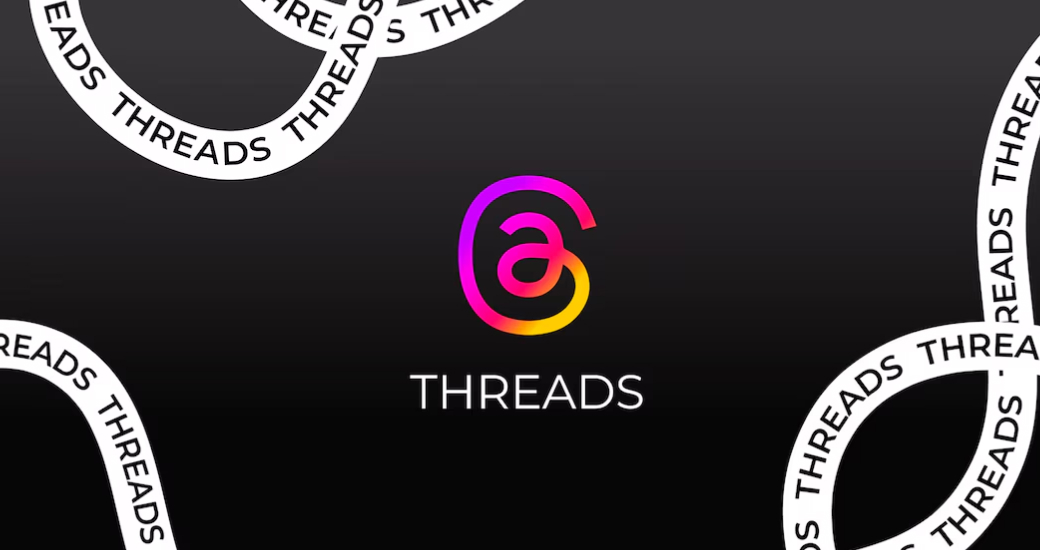Meta's Threads, a dynamic social media application launched as a "Twitter Killer," has taken the tech world by storm, garnering over 30 million sign-ups in a mere 16 hours. With its focus on fostering engaging conversations and vibrant communities, Threads has quickly become a platform of choice for like-minded individuals seeking to connect and explore trending topics.
Designed to leverage Meta's extensive resources and the massive user base of Instagram, Threads combines the best features from various social media platforms, offering a unique and interactive user experience. In this article, we will delve into the app's features, development process, and cost considerations, shedding light on why launching Threads is a strategic move for Meta to solidify its position in the industry.
Threads: The Twitter Killer
Threads' interface draws inspiration from Twitter, featuring concise, text-based content complemented by options for liking, reposting, and quoting threads, similar to retweets. Users can share posts of up to 500 characters, accompanied by captivating images, gifs, and videos lasting up to five minutes. The platform's seamless sign-up process using existing Instagram credentials ensures automatic followings from Instagram, tapping into its vast user base of over two billion monthly active users globally.
With the prevailing challenges faced by Twitter, various tech companies have sought to capitalize on the opportunity, but Threads stands out with Meta's powerful backing. Leveraging substantial resources and Instagram's massive user base, Meta positions Threads as a distinct advantage in the industry. The platform's appeal lies in its ability to cater to diverse interests, creating engaging conversations around current affairs and upcoming trends while simultaneously fostering communities of like-minded individuals.
Why is a Text-Based App in Demand?
In response to recent events surrounding Twitter, Meta, the company formerly known as Facebook, has strategically launched Threads, a new text-based messaging app, to compete directly with Twitter. This move comes after Elon Musk, CEO of Tesla and a prominent Twitter user, implemented a temporary "rate limit" on Twitter, resulting in negative user experiences and increased public complaints.
Recognizing an opportunity to capitalize on the evolving social media landscape, Meta took the initiative to introduce Threads ahead of its planned launch date. By integrating Threads into its existing infrastructure and user base, Meta aims to offer a more engaging and user-friendly social networking platform to address the deficiencies experienced on Twitter.
The Threads app intends to transform online conversations, foster vibrant communities, and facilitate connections between users and their favorite creators and like-minded individuals. As the app gains momentum, it will further enhance Meta's overall platforms and provide users with an improved social networking experience.
In addition to Threads, BlueSky, another Twitter rival, has also experienced a surge in traffic thanks to recent publicity stunts by Elon Musk. These developments are indicative of the increasing demand for social media apps among consumers, as projected by recent reports, which predict a market share of $310.3 billion for the social media ecosystem by 2030.
Given the growing market space and consumer interest in social media apps, the timing appears opportune for Meta to leverage this trend with the introduction of Threads, a promising social messaging platform. The app's early success demonstrates its potential to tap into the evolving tech landscape and carve out a significant position in the market.
How to Make a Text-Based App Like Threads?
Certainly! Developing a text-based app like Threads requires careful consideration and a well-executed process. Here's a more elaborate explanation of each step:
Requirement Analysis
The initial phase involves a thorough analysis of the app's objectives and target audience. Understanding the specific needs and expectations of users is crucial to create a feature-rich and appealing platform. By clearly defining the functionalities that will be incorporated, the development team ensures the app aligns with its intended purpose.
Market Research
Extensive research is conducted to gain a deeper understanding of the social media landscape and identify potential competitors. By analyzing user preferences and industry trends, the development team can identify gaps in the market and determine how the app can stand out. This research-driven approach helps refine the app's overall concept and positioning, increasing its chances of success.
Design and User Interface
The design phase involves creating wireframes, mockups, and interactive prototypes to visualize the app's interface and user experience. A user-friendly and visually appealing design is paramount to capture users' attention and encourage engagement. The design should be consistent with the app's brand identity and tailored to meet the expectations of the tech-savvy audience.
Technical Architecture
During this phase, the app's technical foundation is established. This includes defining the technology stack, server infrastructure, and APIs required for seamless functionality. The team carefully selects programming languages and frameworks that offer scalability, performance, and compatibility to ensure the app can handle increasing user demand and remain efficient.
Backend and Frontend Development
The backend development involves building the core infrastructure, including servers and databases, to handle user data and interactions. Data security and privacy are top priorities, and robust mechanisms are implemented to safeguard sensitive information. Simultaneously, frontend development focuses on creating a seamless user interface with smooth navigation across different devices and platforms. A responsive design ensures the app delivers a consistent experience to users regardless of their device.
Testing and Quality Assurance
Thorough testing is conducted to detect and resolve any technical issues or usability challenges. Functional testing ensures all features work as intended, while compatibility testing verifies the app's performance across various devices and operating systems. User acceptance testing allows real users to provide feedback, helping to iron out any remaining concerns and refine the user experience.
Deployment and Maintenance
Once the app is ready, it is deployed to app stores, making it available to users. However, the development process doesn't end there. Regular maintenance, updates, and improvements are necessary to address emerging issues, incorporate user feedback, and keep the app in sync with evolving technological trends. Continuous monitoring ensures the app remains stable and efficient, providing a seamless user experience over time.
What All Do You Need to Build an App Like Threads?
Threads, as a text-based app, distinguishes itself with a set of unique and appealing features designed to foster connections and create a fresh approach to online conversations. Some key features that can be launched initially while developing a text-based app like Threads include:
Seamless Integration: Threads enables users to sign up using their existing Instagram accounts, facilitating direct connections with friends and followers on Instagram within the app.
Automatic Account Following: Users are automatically connected to all the accounts they follow on Instagram as they join Threads, ensuring continuous connections with people of interest. Additionally, users can search for and follow other accounts to expand their network.
Enhanced Messaging: Threads supports various types of content sharing, including text, quotes up to 500 characters, photos, links, and videos up to 5 minutes in length. The app also allows sharing content to Instagram stories, enhancing visibility across platforms.
Familiar Interface: Threads has a user-friendly interface resembling Twitter, featuring short text-based content, options to like and repost, and the ability to quote threads, akin to retweeting with quotes.
Community Building: The app emphasizes the creation of vibrant communities where users can engage in meaningful discussions with like-minded individuals, sharing ideas, opinions, and creativity.
"Turn Out the Noise" Feature: Threads offers users control over their conversations through a feature allowing customization of who can mention or reply to them. Users can filter out replies with specific words and manage profiles through unfollowing, blocking, restricting, or reporting. This enhances the conversation environment and promotes positivity.
Compatibility with Interoperable Networks: Threads plans to support the Activity Pub protocol, an open social networking protocol established by the W3C. This allows Threads to connect with other apps supporting the protocol, fostering a more inclusive and expansive social experience across different platforms.
With the incorporation of these distinct features, a text-based app similar to Threads can provide users with a compelling and engaging platform for building connections and participating in meaningful discussions.
How Much Does it Cost?
The cost of developing an app like Threads can vary significantly, ranging from $45,000 to $300,000. Several factors come into play when estimating the overall development cost. These factors include the app's complexity, the chosen app development agency's location, the integrated features, the selected tech stack, and the app's overall design and aesthetics. As a general rule, higher complexity leads to higher development costs.
Here is a breakdown of the estimated cost and time frames for different levels of app complexity:
Simple App
Development Cost: $45,000 to $90,000
Time Frame: 3 to 6 months
Medium Complex App:
Development Cost: $100,000 to $200,000
Time Frame: 7 to 9 months
Most Complex App:
Development Cost: $220,000 to $300,000
Time Frame: 9+ months
The development cost and time frame increase as the app's complexity and feature set become more sophisticated. Careful consideration of these factors will help in estimating the resources required to build an app similar to Threads for a tech-savvy audience.
In Conclusion
Threads, Meta's dynamic text-based app, has swiftly risen to prominence in the social media landscape, offering a fresh and engaging platform for fostering connections and vibrant conversations. With its seamless integration with Instagram and an array of unique features, Threads has quickly become a standout competitor in the tech industry, attracting millions of sign-ups in record time.
For those looking to venture into app development services and create an app like Threads, it is essential to consider the factors that influence the development cost, time frame, and overall success. The app's complexity, design, and technical architecture play crucial roles in determining the final product's appeal and functionality.
If you are considering embarking on a similar venture, Saffron Tech can be your ideal partner in web design and app design. As an experienced app development agency, Saffron Tech offers comprehensive solutions to turn your app idea into reality. From requirement analysis to user interface design and seamless integration, their team of experts ensures a seamless development process that aligns with your objectives and resonates with the tech-savvy audience.
Don't miss the opportunity to capitalize on the growing demand for social media apps and create your own distinctive platform like Threads. Contact Saffron Tech today to kickstart your app development journey and be at the forefront of the evolving social media landscape.



